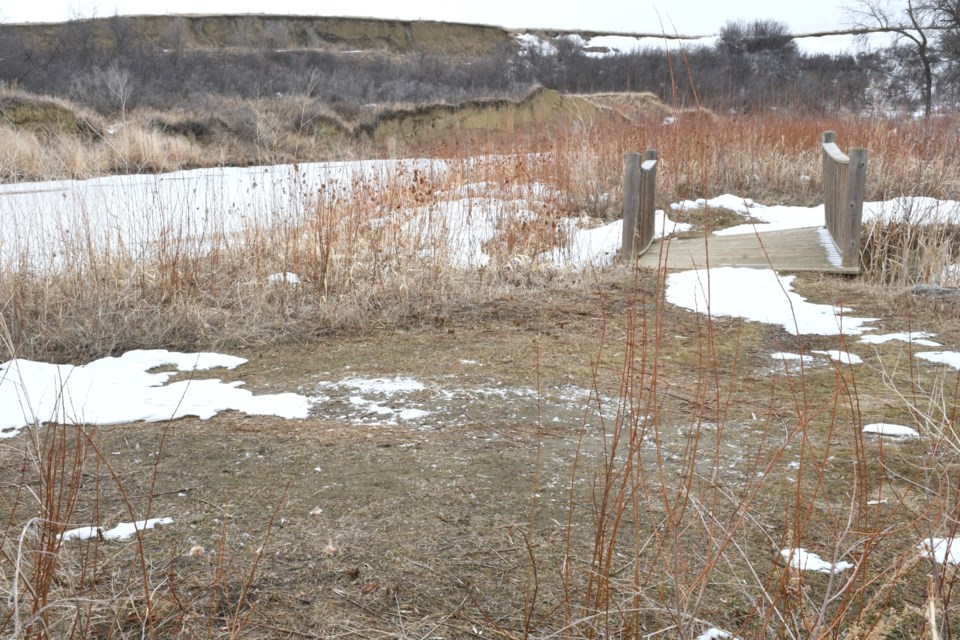MOOSE JAW — Local veterinarians are advising dog owners in and around Moose Jaw — especially around Wakamow Valley and the city’s northwest trails — to be aware of blastomycosis, a fungal infection that can affect their pets.
While not aiming to cause alarm, it’s important for pet owners to understand this condition to ensure the safety of their animals.
Dr. Melissa Smith, a veterinarian at Bellamy Harrison Animal Hospital, has encountered cases of blastomycosis during her practice. She noted that the disease has been present in the area for decades.
“There is a fungal infection in Moose Jaw that has been endemic here… since I started practicing,” she said. “It has been around for the last 20 or 25 years at least.”
Blastomycosis is caused by the fungus Blastomyces dermatitidis, which thrives in moist soils — particularly near riverbanks and areas with high humidity. Dogs can contract the infection by inhaling fungal spores from the environment.
Once inhaled, the spores can affect the respiratory tract and potentially spread to other organs.
The infection manifests through various clinical signs, often targeting the lungs. Common symptoms in dogs include coughing, fever, depression, weight loss, and loss of appetite. In some cases, skin lesions, eye infections leading to sudden blindness, lameness, and seizures may occur.
Treatment typically involves the antifungal drugs itraconazole or fluconazole, which are administered over several months. While many dogs respond well to treatment, the prognosis varies. Dr. Smith noted that treatment can be costly, especially for larger breeds, due to the duration and dosage required.
The prevalence of blastomycosis remains hard to predict, with cases surfacing under varying environmental conditions. Dr. Smith noted that while there haven’t been many cases this fall and winter — she encountered one serious case recently — some years can see around five to 10 cases in the area. Reports of the fungus were also confirmed by Amanda Drake, registered veterinary technician (RVT) at Peak Veterinary Health.
It’s important to describe where your dog has been if you book an appointment for testing so veterinarians can better track instances of the fungal infection.
To help prevent your dog from contracting blastomycosis, avoid letting them dig, sniff, or play in moist, sandy soils — especially near bodies of water such as the Moose Jaw River and the Qu’Appelle River. It’s best practice to avoid these areas during wet conditions in the spring, fall, and after heavy rain.
Veterinarians advise owners to keep pets away from marshy, wooded areas and decaying vegetation, especially if the soil has been recently disturbed. Supervise outdoor activities, particularly in late summer and fall, and maintain proper yard drainage to reduce fungal growth.
If your dog shows symptoms like coughing, lethargy, or skin issues — especially following a visit to a walking trail — seek veterinary care promptly.
For more information, or if your dog is showing symptoms, call the Bellamy Harrison Animal Hospital at 306-694-1639, Peak Veterinary Health at 306-692-4800, or speak with your veterinarian.
For more information, see the affiliated Government of Canada's Pathogen Safety Data Sheet.




